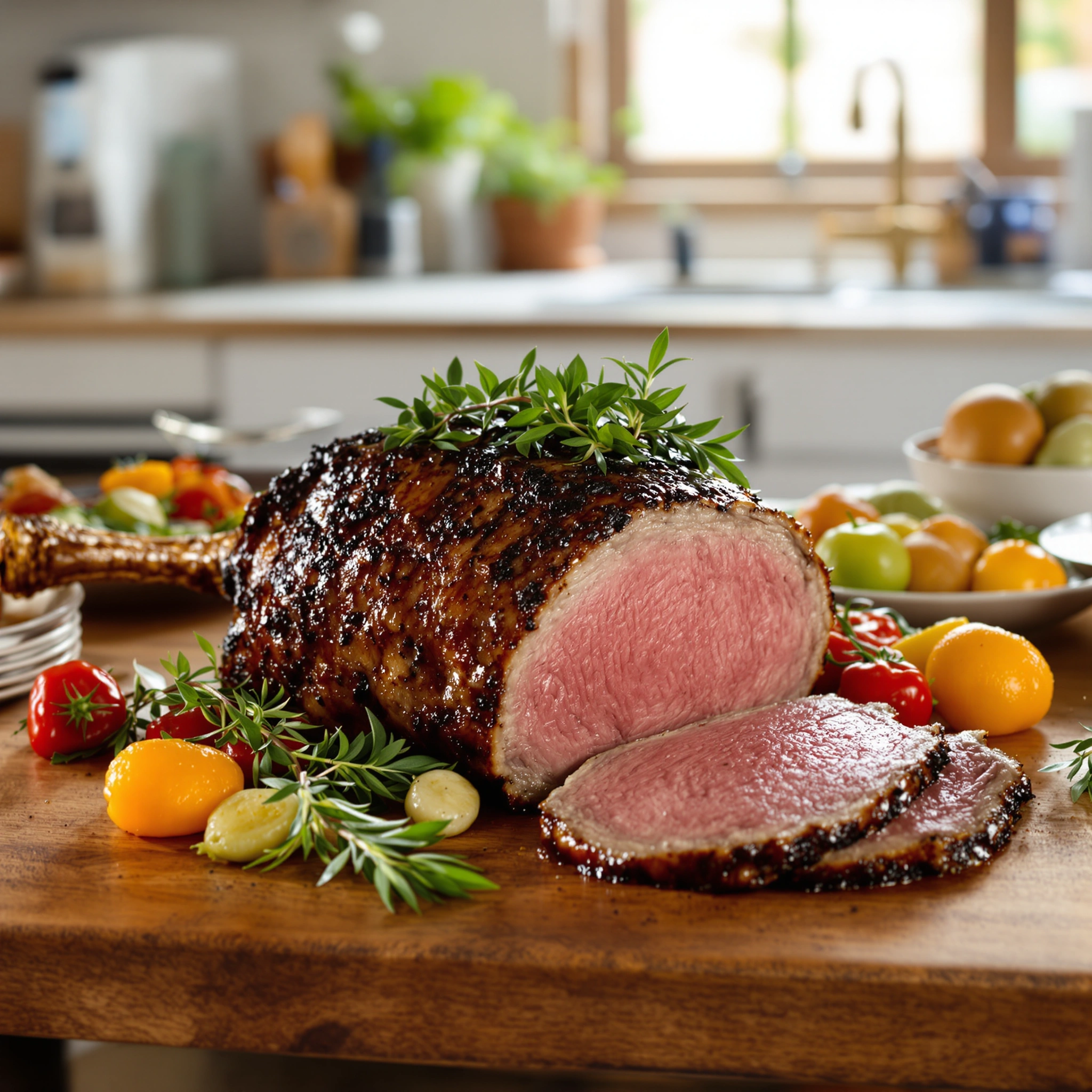As autumn arrives, the desire for a warm, hearty meal grows. Picture slicing into a perfectly cooked venison roast. The meat is tender, and the aroma fills your kitchen with wild scents. This experience is more than just a meal; it’s a journey where nature meets cooking.
In this guide (Venison Roast Recipe), we’ll show you how to make a venison roast that will impress everyone. Whether you hunt or just love to cook, you’ll learn how to make a roast that’s both tender and flavorful. Your family and friends will love it.
Now, let’s start exploring the magic of venison, one delicious bite at a time.
Introduction to Venison
Venison, the lean and flavorful meat from deer, is becoming more popular. It’s a favorite among those who care about their health and love to cook. This game meat offers a tasty alternative to beef or poultry, opening up new possibilities for game meat recipes.
What is Venison?
Venison comes from different deer species like whitetail, mule deer, and elk. It has less fat and calories than beef, but tastes rich and slightly sweet.
Nutritional Benefits of Venison
- It’s high in protein, which is good for muscles.
- It has less saturated fat, making it better for your heart.
- It’s full of iron, helping your blood carry oxygen.
- It’s also a great source of vitamin B12, important for energy and brain function.
Common Myths about Venison
Many think venison tastes “gamey” or is tough. But, with the right handling and cooking, it becomes tender and tasty. Also, finding and preparing venison is easy, as it’s available in many stores and can be used in many recipes.
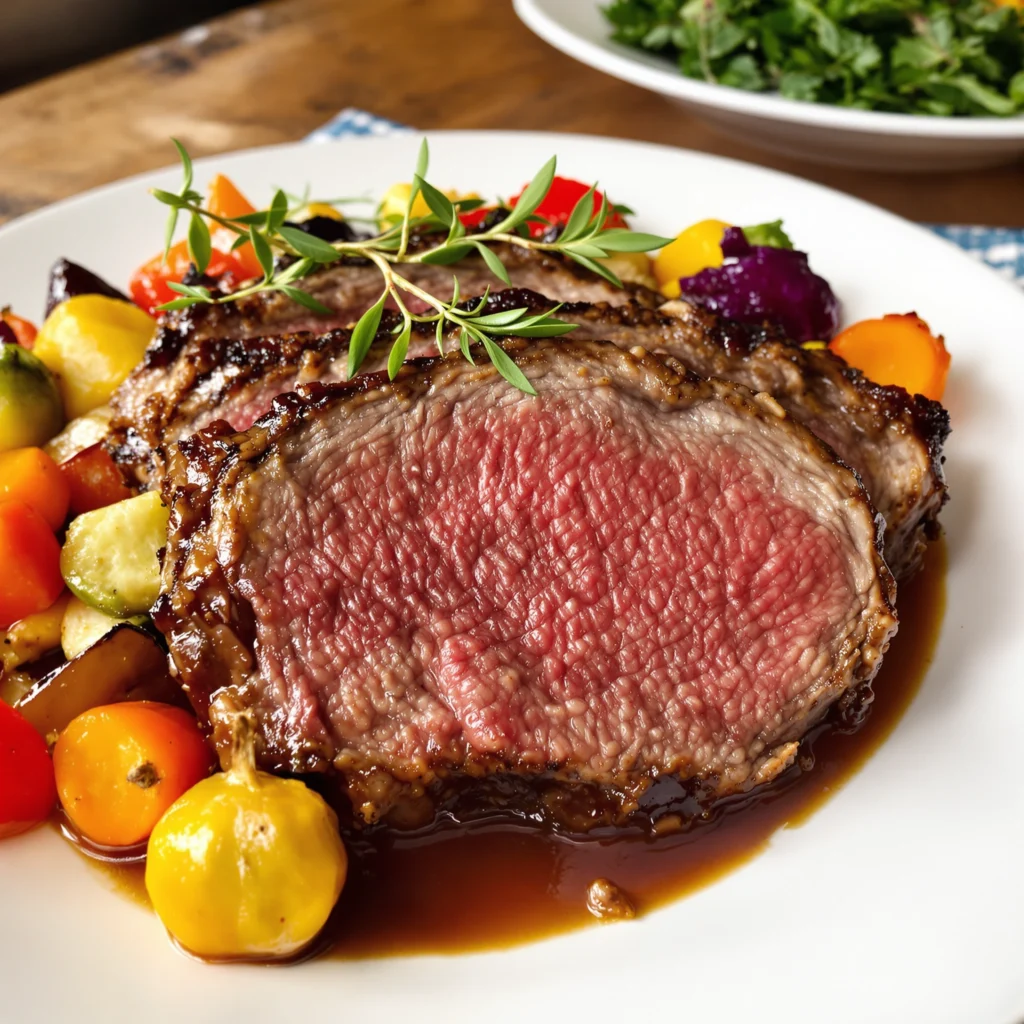
“Venison is a lean, healthy alternative to traditional red meat that can be prepared in countless delicious ways.”
Choosing the Right Cut of Venison
Choosing the right cut of venison is key to a delicious roast. Venison, the wild meat from deer, comes in various cuts. Each cut is best for different cooking methods. Let’s look at the top cuts for roasting and how to pick fresh, quality venison.
Popular Cuts for Roasting
The top cuts for roasting venison are the loin, rump, and shoulder. Each cut has its own taste and texture:
- Loin: The loin is tender and lean, perfect for roasting. It’s juicy and succulent.
- Rump: The rump is bigger and tougher. It’s great for slow cooking like braising or roasting. It has a strong, meaty taste.
- Shoulder: The shoulder, or “chuck,” is affordable and flavorful. It needs longer cooking to tenderize, making it perfect for roasting.
How to Select Fresh Venison
It’s crucial to pick the freshest venison, whether from a butcher or hunting. Look for venison that’s deep red, firm, and without discoloration or excess moisture. Stay away from packages with a strong, gamey smell. This usually means the meat is old.
| Cut | Flavor Profile | Best Cooking Method |
|---|---|---|
| Loin | Tender and lean | Roasting |
| Rump | Robust and meaty | Braising or Roasting |
| Shoulder | Flavorful and affordable | Roasting |
By picking the right cut and ensuring it’s fresh, you’re set for a delicious roast. This will impress everyone. Keep reading for more tips on cooking your venison to perfection!
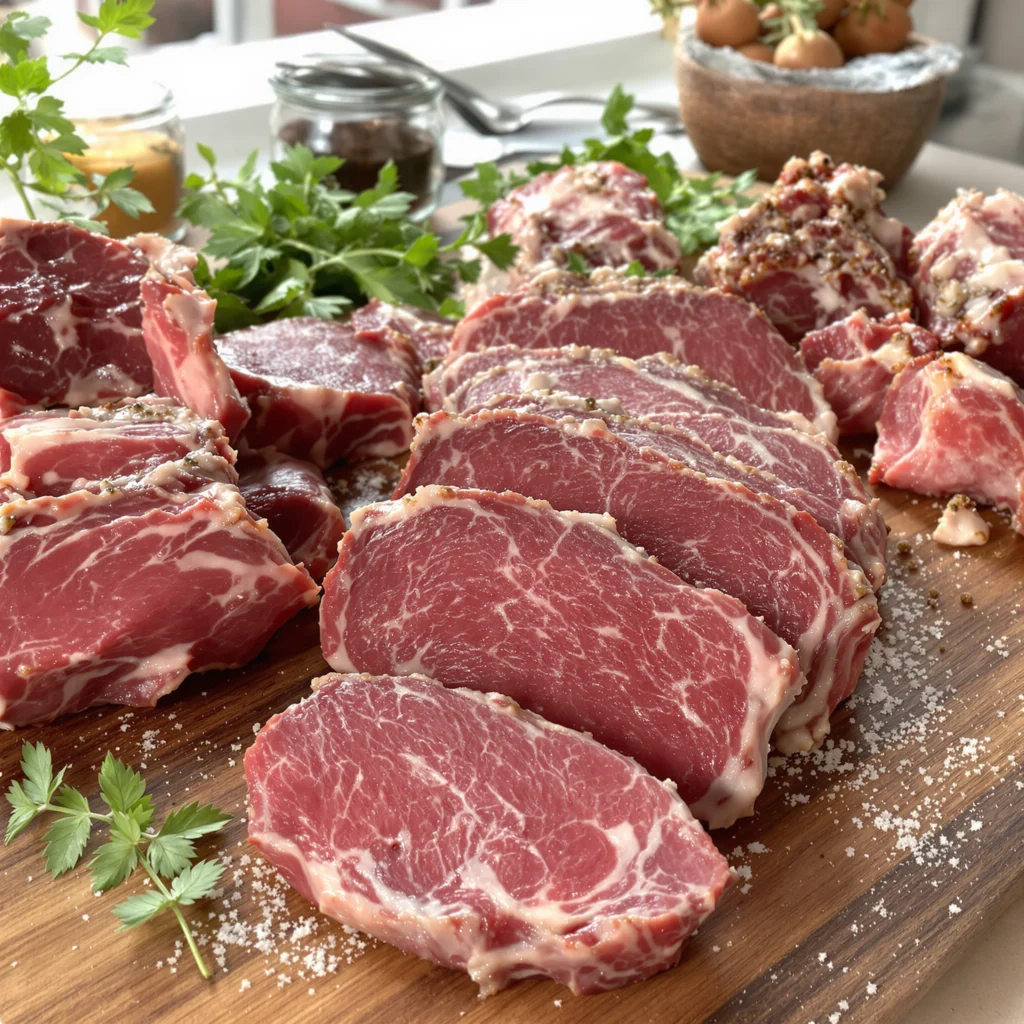
Essential Ingredients for a Perfect Roast
Making a delicious venison roast is more than just putting it in the oven. You need the right seasonings, marinades, and oils to enhance flavor and texture. Let’s explore the key ingredients that will make your venison roast a true masterpiece.
Seasonings and Marinades
Venison’s unique taste is enhanced by various spices and herbs. For a classic roast, mix salt, black pepper, garlic, rosemary, and thyme. These flavors complement the venison’s richness.
If you want something bolder, try a venison marinade with soy sauce, Worcestershire sauce, and red wine vinegar. The marinade adds flavor and tenderizes the meat.
Recommended Cooking Oils
Choose oils for spice rubs for venison that can handle high heat without burning. Avocado oil, grapeseed oil, and refined olive oil are great options. They have a high smoke point, allowing for a nice crust.
These oils also won’t add unwanted flavors, letting the venison’s natural taste shine through.
“The key to a perfect venison roast lies in the right balance of seasonings and cooking techniques. With the proper ingredients, you can unleash the full potential of this flavorful and nutritious meat.”
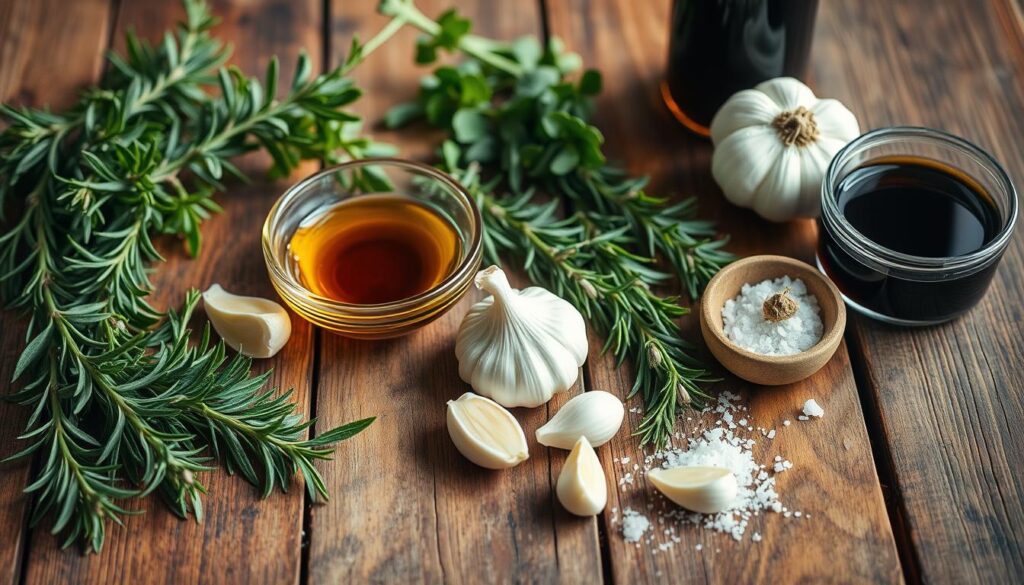
With the right seasonings, marinades, and oils, you’re on your way to a tender, juicy, and flavorful venison roast. Try different flavors to find what you like best.
Preparing Your Venison Roast
Making a delicious venison roast begins with the right preparation. It doesn’t matter if you have fresh or frozen venison. Knowing how to thaw and marinate is key to a great dish.
Thawing Frozen Venison
Thawing frozen venison is important to keep it good. Move it from the freezer to the fridge slowly. Let it thaw for 24-48 hours, depending on its size.
Don’t thaw it at room temperature. This can lead to bacterial growth and affect the meat’s texture.
Marinating for Maximum Flavor
Marinating your venison roast makes it tender and flavorful. Use a marinade with venison marinade, red wine, garlic, and herbs. Let it marinate for 2-4 hours, or up to 24 hours for more flavor.
Remember to turn the roast often for even flavor. Following these steps will help you make a tender, juicy, and flavorful venison roast.
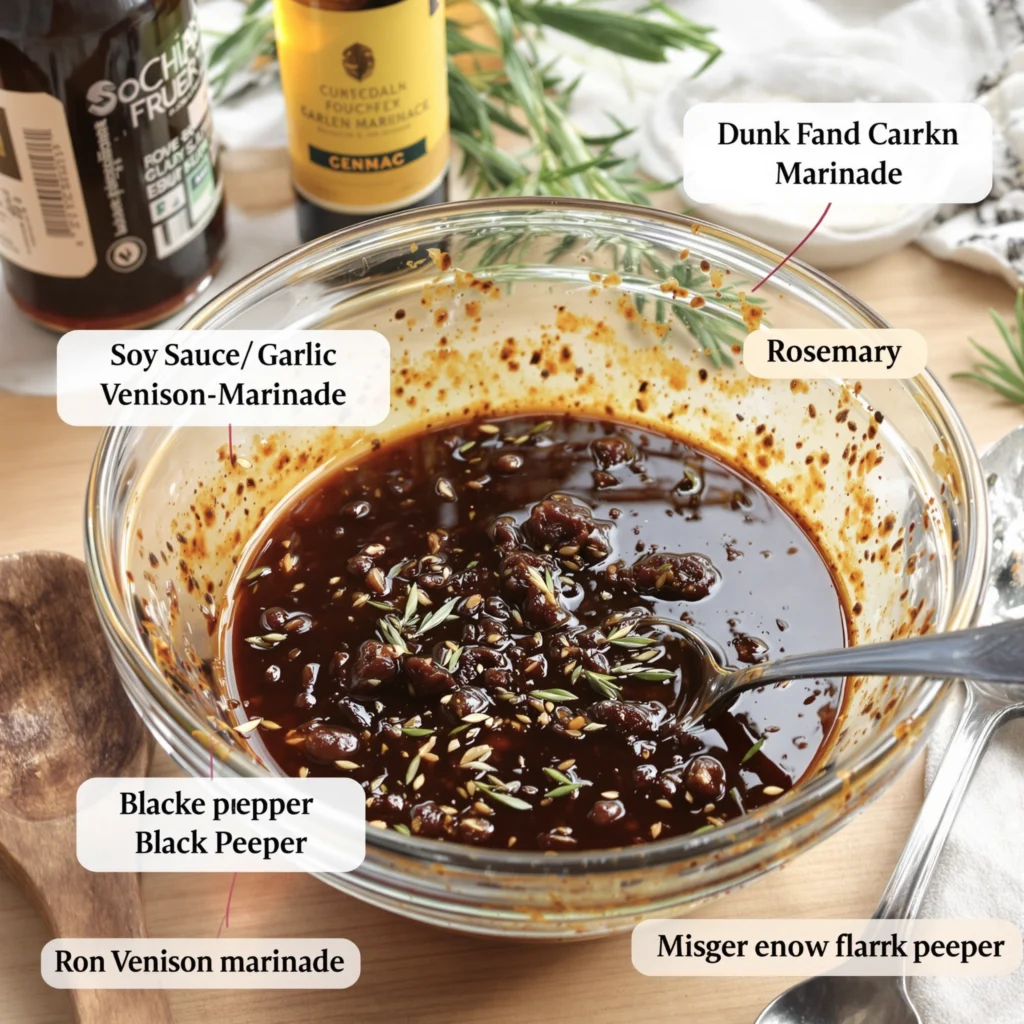
Cooking Techniques for Venison Roast
Choosing the right cooking method is key to a delicious venison roast. You can use slow roasting or high-temperature roasting. Each method suits different tastes and venison cuts.
Slow Roasting Method
Slow roasting makes the venison tender and juicy. It cooks at 275°F (135°C) for 2-3 hours. This low heat breaks down tissues, enhancing flavor.
The slow roasting method offers:
- Tender, succulent meat that practically falls off the bone
- Concentration of natural flavors as the juices are retained
- Ideal for tougher cuts of venison that require longer cooking times
High-Temperature Roasting
High-temperature roasting gives a crispy, caramelized outside and a juicy inside. It sears at 450°F (230°C) for 30-60 minutes.
The benefits of high-temperature roasting include:
- Golden-brown, crunchy crust that seals in the natural flavors
- Quicker cooking time, making it a great option for busy weeknights
- Suitable for more tender cuts of venison that don’t require extended cooking
It’s crucial to check the venison’s internal temperature, no matter the method. See the Ideal Cooking Temperatures and Times section for more tips.
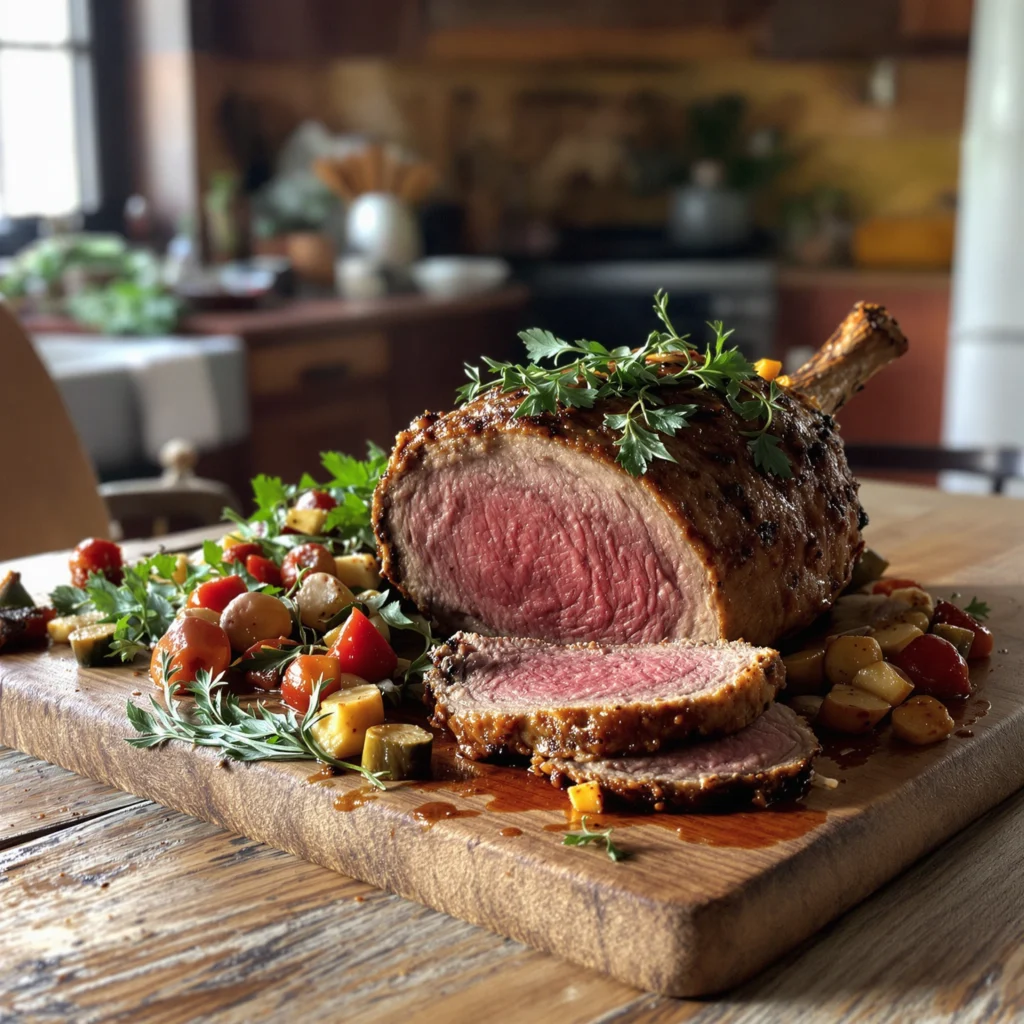
Ideal Cooking Temperatures and Times
Getting the perfect doneness for your venison roast is key. Knowing the best internal temperatures ensures your meat is tender and juicy. Whether you like it rare, medium, or well-done, the right venison cooking times and roasting techniques are crucial.
Understanding Internal Temperatures
The USDA says to cook venison to 145°F (63°C) for medium rare, 160°F (71°C) for medium, and 170°F (77°C) for well-done. Use a meat thermometer to check the temperature. Insert it into the thickest part of the meat, avoiding bones.
- Medium Rare: 145°F (63°C)
- Medium: 160°F (71°C)
- Well-Done: 170°F (77°C)
Resting Time after Cooking
After your venison roast hits the right temperature, let it rest for 10-15 minutes before slicing. This step lets the juices spread evenly, making the meat more tender and flavorful.
“Resting your venison roast is crucial for achieving the perfect texture and juiciness. Don’t skip this step!”
By sticking to these venison cooking times and roasting techniques, you’ll make a delicious venison roast. Your family and friends will love it.
Side Dishes to Complement Venison
There are many options for sides with your venison roast. You can choose from classic dishes or try something new. The right sides can make your venison recipes stand out and wow your guests.
Traditional Side Dishes
Roasted root vegetables like carrots, parsnips, and potatoes are a great choice. They add sweetness and a soft texture that goes well with venison. Wild rice is also popular, offering a nutty and chewy contrast.
Creative Pairings
- Roasted Brussels sprouts with a touch of balsamic glaze
- Creamy mashed cauliflower, a lighter alternative to mashed potatoes
- Sautéed kale or Swiss chard, adding a pop of color and freshness
- Cranberry relish or compote, providing a tart and fruity counterpoint
Feel free to try different combinations. The goal is to find sides that enhance the venison’s rich flavors without overpowering it. With a bit of creativity, your venison roast can become a memorable dish.
“The right side dishes can be the difference between a good meal and a great one.” – Chef Gordon Ramsay
Serving Suggestions for Venison Roast
After cooking your venison roast, it’s time to show it off. Careful plating and garnishes can make your dish look amazing. Learn how to present your game meat and hunting season recipes with these tips.
Plating Your Roast
Choose a platter or dish that highlights your venison roast. A rustic wooden board or sleek slate plate works well. Slice the roast into even pieces to show off its juicy texture.
Garnishes that Enhance Flavor
Add garnishes that bring out the venison’s natural flavors. Try these:
- Fresh rosemary or thyme sprigs for an earthy taste
- Crisp, colorful veggies like roasted brussels sprouts or sautéed kale
- Fruit compotes or chutneys, like cranberry or apple, for a sweet contrast
- Toasted nuts or seeds, such as pine nuts or pumpkin seeds, for crunch
These garnishes not only taste great but also make your dish look stunning. They’re sure to impress your guests.
Follow these tips to make your venison roast a showstopper. Enjoy the praise and relish the delicious taste of your venison.
Storing and Reheating Leftovers
Enjoying your venison roast doesn’t have to stop after the first meal. With the right storage and reheating, you can enjoy it for days. Proper wild meat preparation and handling are crucial to keep your venison roast recipe fresh.
Proper Storage Techniques
To keep your leftover venison roast fresh, follow these tips:
- Refrigerate cooked venison within 2 hours of cooking. Wrap it tightly in foil or use an airtight container.
- Refrigerated venison stays fresh for 3-4 days. Freeze it in portions for up to 3 months for longer storage.
- Freeze the roast in heavy-duty foil, plastic wrap, or freezer-safe bags to prevent freezer burn.
- Label the packages with the date and contents to track storage time.
Best Methods for Reheating
Reheating your leftover venison roast is simple with these methods:
- Oven Reheating: Preheat your oven to 325°F. Place the venison in a baking dish, cover with foil, and reheat for 15-20 minutes until heated through.
- Stovetop Reheating: Slice the venison and reheat in a skillet over medium heat, stirring occasionally, until warmed.
- Microwave Reheating: Place the venison on a microwave-safe plate, cover loosely, and heat in 30-second intervals until heated to your desired temperature.
Choose your reheating method wisely to avoid overcooking. With a bit of care, you can enjoy your venison roast’s delicious flavors for a long time.
Conclusion: Enjoying Your Venison Roast
As you enjoy your venison roast, think about the journey you’ve taken. This game meat is not only tasty but also good for you. It offers a special dining experience and health benefits.
Tips for Sharing with Family and Friends
Share your venison roast with family and friends. It’s a meal that brings people together. Talk about your favorite venison dishes and enjoy the company.
Invitation to Experiment with Variations
The world of venison roast recipes is full of possibilities. Try new seasonings, cooking methods, and sides. Find your own way to enjoy game meat recipes and discover new flavors.

